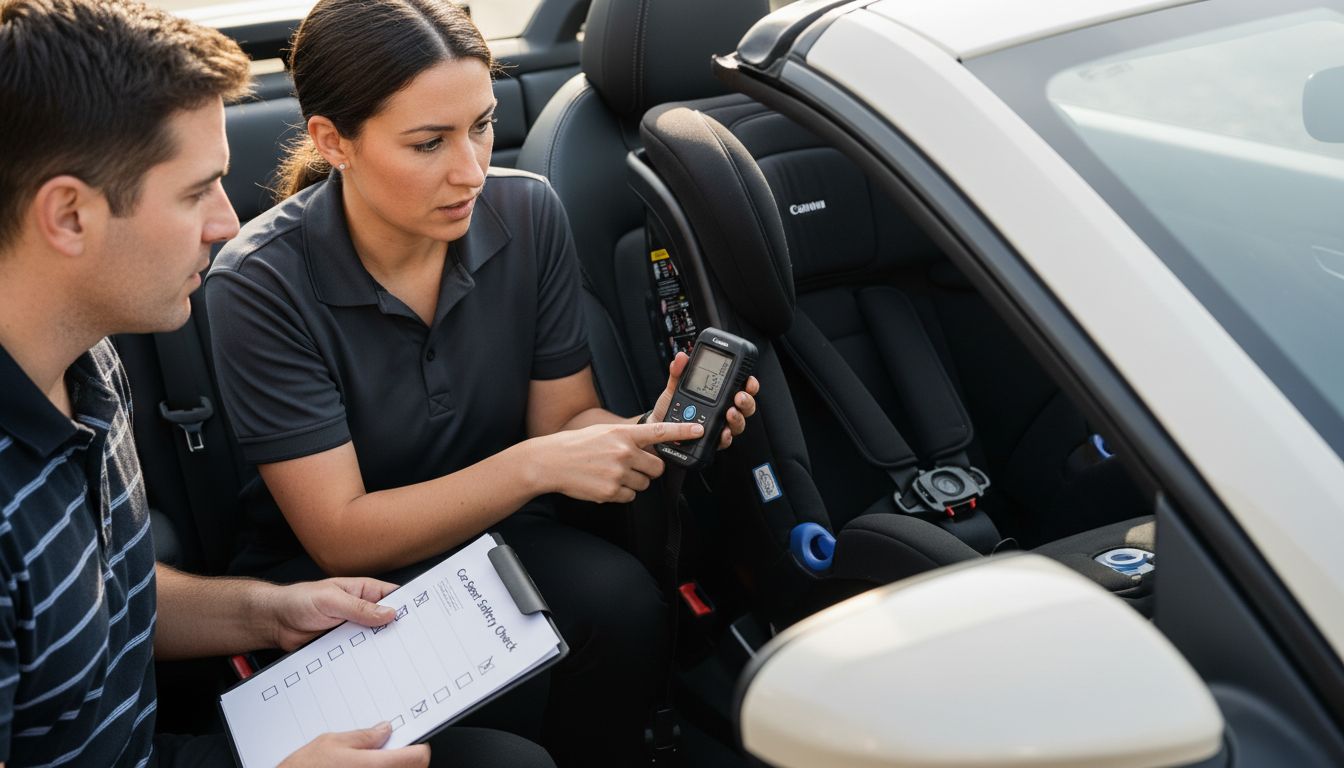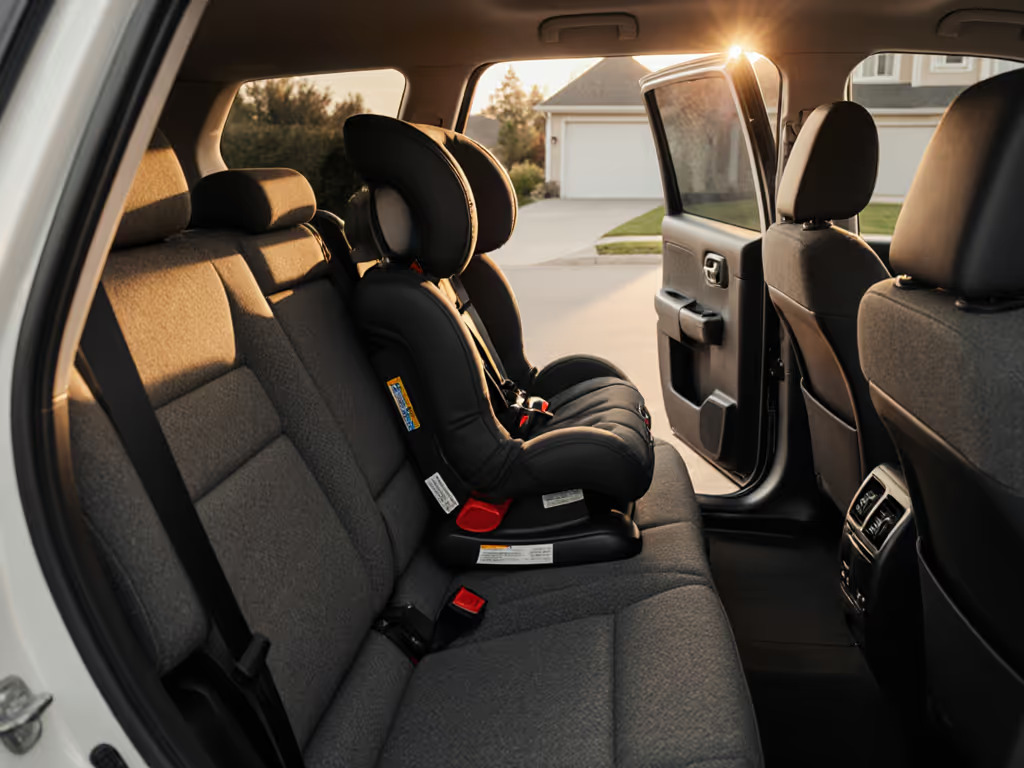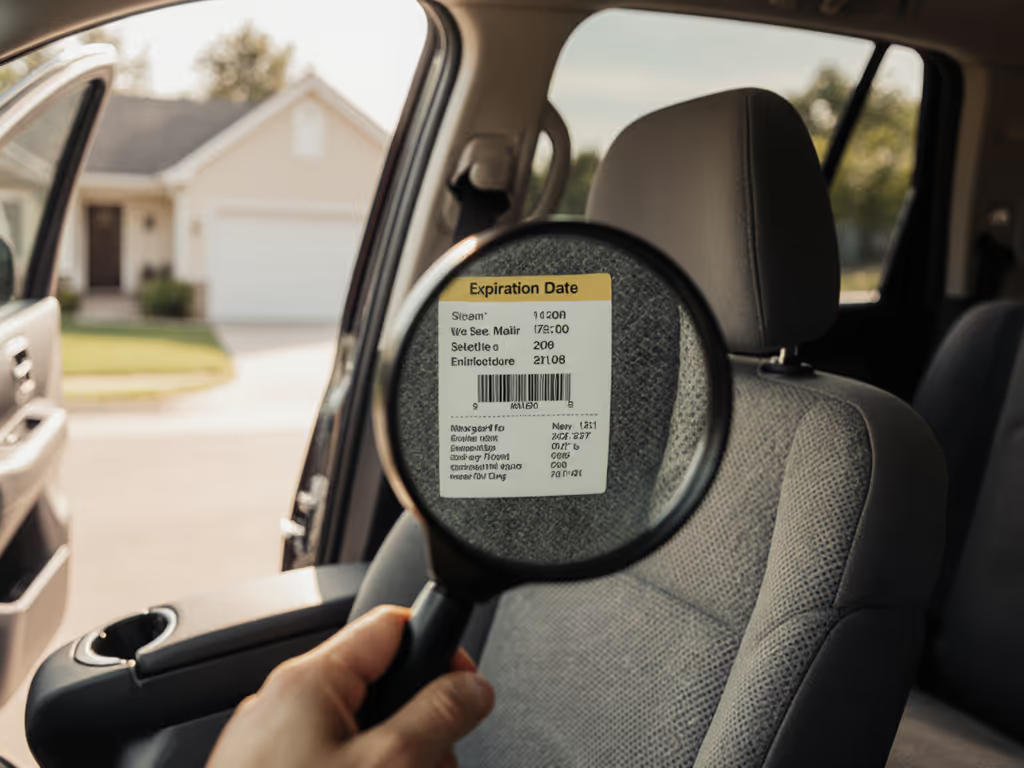
Personalized Car Seat Recommendations Explained: Safety and Fit

Most parents know that one-size-fits-all advice rarely meets a child’s real safety needs. With over 90% of car seat mistakes linked to poor fit or incorrect installation, personalized recommendations are becoming more critical than ever. Choosing the right car seat means weighing much more than simple age or price—it involves understanding your child, your vehicle, and your family’s routines. Discover how new, tailored approaches can help every family achieve the safest ride possible.
Key Takeaways
| Point | Details |
|---|---|
| Personalized Recommendations Enhance Safety | Tailored car seat selections consider unique factors like child size, vehicle type, and family travel habits, significantly improving safety outcomes. |
| Convertible Seats Offer Versatility | Convertible car seats adapt to a child’s growth stages, providing a long-term solution for transportation safety. |
| Vehicle Compatibility is Critical | Proper fit between the car seat and vehicle is essential for effectiveness, demanding careful assessment of installation factors and dimensions. |
| Education is Key to Avoiding Errors | Many parents make common mistakes in car seat selection and installation; staying informed is crucial for optimal child safety. |
Defining Personalized Car Seat Recommendations
Personalized car seat recommendations transform how parents select safety equipment for their children by moving beyond generic advice and focusing on unique contextual factors. Just like recommendation systems in technology adapt to individual preferences, car seat selection must consider multiple specific variables that impact a child's safety and comfort.
The core of personalized car seat recommendations involves analyzing several critical dimensions that make each child's transportation needs distinctive. These dimensions include:
- Child's Age and Size: Precise measurements matter more than approximate age ranges
- Vehicle Model and Interior Configuration: Not all car seats fit identically in different vehicles
- Family's Lifestyle and Travel Patterns: Frequency of travel, types of trips, and family dynamics
Research from context-aware recommendation systems underscores the importance of data-driven personalization. A study from the arxiv repository highlights how user-specific data can dramatically improve service recommendations by considering individual context. In the car seat domain, this translates to understanding that a one-size-fits-all approach fundamentally fails to address the nuanced safety requirements of each child and family.
By embracing a personalized approach, parents can leverage scientific insights and data-driven methodologies to select car seats that provide optimal protection. The goal isn't just compliance with safety standards but creating a tailored safety ecosystem that adapts to a child's evolving needs. Professional child passenger safety technicians increasingly recognize that personalization isn't a luxury—it's a critical component of child transportation safety.
Types of Convertible Seats and Suitability
Convertible car seats represent a critical category of child safety equipment designed to adapt to a child's growth stages, offering parents a versatile and cost-effective solution for long-term transportation protection. Unlike single-purpose seats, these adaptable systems transition through multiple configurations, supporting children from infancy through early childhood.
Typically, convertible seats are categorized into three primary configurations:
- Rear-Facing Infant Seats: Recommended for newborns to toddlers, providing maximum protection for vulnerable young children
- Forward-Facing Toddler Seats: Supporting children who have outgrown rear-facing weight limits
- Booster Seat Mode: Final configuration that uses vehicle seat belts for older children approaching adolescence
Safety experts recommend selecting convertible seats based on critical measurements beyond age. Weight capacity, height restrictions, and harness system compatibility are fundamental considerations that determine a seat's appropriateness. The preventinjury resource emphasizes that each transition between seat modes requires careful assessment of the child's physical development and the specific seat's engineering specifications.
Beyond technical specifications, parents must consider practical factors such as vehicle compatibility, installation complexity, and long-term comfort. A truly exceptional convertible seat doesn't just protect—it grows with the child, providing consistent safety through different developmental stages. Professional child passenger safety technicians stress that investing in a high-quality convertible seat is not merely a purchase but a comprehensive safety strategy that adapts to a child's evolving transportation needs.
Factors Affecting Child and Vehicle Fit
Vehicle compatibility is a complex, multidimensional challenge that goes far beyond simply purchasing a car seat that looks like it might fit. Each vehicle has unique interior geometry, seat contours, and attachment points that dramatically influence how a child safety seat performs and secures a child during transportation.
Key factors that impact child and vehicle fit include:
- Vehicle Seat Geometry: Width, slope, and cushion depth of vehicle seats
- Lower Anchor and Tether Anchor (LATCH) System Configuration: Location and accessibility of mounting points
- Seat Belt Mechanism Design: Retractor types and belt pathway characteristics
- Interior Space and Seating Arrangement: Proximity to other seats, console design, and available legroom
Research from automotive safety guides emphasizes that not all car seats are universally compatible with every vehicle model. The SAS guide highlights that precise measurements and installation techniques are critical for ensuring optimal safety. Parents must consider factors like seat base width, angle of recline, and the specific attachment mechanism required for secure installation.
Beyond technical specifications, environmental factors also play a significant role in determining fit. Temperature variations, humidity, and even the age of the vehicle can influence how a car seat interfaces with the vehicle's interior. Professional child passenger safety technicians recommend conducting multiple test installations, checking for minimal movement, and ensuring that the seat sits level and tight against the vehicle seat. The ultimate goal is creating a symbiotic relationship between the child safety seat, the vehicle, and the child—a delicate balance of engineering, safety design, and personalized fit.

Safety Standards and Regulatory Compliance
Regulatory compliance in child passenger safety represents a complex framework of federal and state guidelines designed to protect children during transportation. The Federal Motor Vehicle Safety Standard (FMVSS) 213 serves as the foundational regulation that establishes minimum performance requirements for child restraint systems in the United States, setting a critical baseline for manufacturing, testing, and safety protocols.
Key aspects of safety standards encompass several fundamental requirements:
- Crash Test Performance: Mandatory dynamic testing simulating various collision scenarios
- Material Durability: Specifications for fabric strength, harness integrity, and structural resilience
- Age and Weight Classifications: Precise guidelines for appropriate seat usage based on child measurements
- Installation Mechanism Standards: Requirements for secure attachment methods like LATCH systems
Manufacturers must navigate an intricate landscape of safety regulations that extend beyond basic structural requirements. Comprehensive testing involves multiple evaluation parameters, including:
- Energy absorption capabilities
- Resistance to extreme temperature variations
- Harness system effectiveness
- Structural integrity under simulated crash conditions
Professional child passenger safety technicians emphasize that regulatory compliance is not just about meeting minimum standards but represents a commitment to continuous safety improvement. While federal guidelines provide a critical foundation, many manufacturers voluntarily exceed these requirements, conducting additional research and implementing advanced safety technologies that go well beyond mandated protocols. The goal is creating a safety ecosystem that anticipates potential risks and proactively mitigates them through rigorous design and testing methodologies.
Common Errors in Car Seat Selection
Car seat selection is fraught with potential mistakes that can compromise a child's safety, often stemming from well-intentioned but misguided assumptions about protection and fit. Parents frequently make critical errors that seem minor but can have significant consequences during a potential collision scenario.
The most prevalent selection errors include:
- Incorrect Size Progression: Transitioning to forward-facing or booster seats too early
- Ignoring Weight and Height Limits: Using seats beyond their recommended specifications
- Purchasing Based on Price: Prioritizing cost over safety features and compatibility
- Overlooking Vehicle Compatibility: Assuming all car seats work in all vehicles
According to guidance from the American Academy of Pediatrics, installation mistakes represent another major concern. These typically involve:
- Loose harness straps that don't secure the child properly
- Incorrect angle of seat recline
- Improper use of lower anchors or seat belt routing
- Failing to replace seats after moderate to severe accidents
Professional child passenger safety technicians emphasize that car seat selection is a nuanced process requiring continuous education and awareness. Many parents unknowingly compromise safety by relying on outdated information, hand-me-down seats, or assumptions about protection. The key is understanding that car seat safety evolves with research, and what worked a few years ago might not meet current safety standards. Staying informed, consulting professionals, and regularly checking manufacturer guidelines can help parents navigate these complex selection challenges and ensure optimal protection for their children.
Comparing Personalized and Generic Recommendations
Personalized car seat recommendations fundamentally transform the traditional approach to child safety equipment selection by moving beyond one-size-fits-all solutions. Unlike generic recommendations that provide broad, standardized guidance, personalized approaches analyze multiple intricate factors specific to individual families, vehicles, and children's unique characteristics.
Key differences between personalized and generic recommendations include:
- Context Specificity: Personalized recommendations consider specific vehicle interior dimensions, child measurements, and family travel patterns
- Precision: Tailored suggestions use granular data points instead of approximate age or weight ranges
- Adaptability: Personalized systems continuously update recommendations as child grows and family circumstances change
- Risk Mitigation: Detailed assessments identify potential compatibility issues generic recommendations might overlook
Research from context-aware recommendation systems demonstrates significant advantages of personalization. A study from the arxiv repository highlights how user-specific data can dramatically improve recommendation accuracy, with personalized approaches showing up to 167% improvement in user satisfaction compared to generic methods. In the car seat domain, this translates to recommendations that go beyond standard safety compliance to create a truly optimized protection strategy.
Professional child passenger safety technicians emphasize that personalization is not a luxury but a critical safety approach. While generic recommendations provide a baseline, they cannot account for the nuanced interactions between a specific child, vehicle, and car seat. The future of child passenger safety lies in leveraging advanced data analysis, biomechanical research, and individualized assessment to create recommendations that are not just safe, but precisely tailored to each unique family's transportation needs.

Discover Personalized Safety Solutions for Your Child's Car Seat Needs
Choosing the right car seat is more than just selecting a product from the shelf. The article highlights the challenge parents face with generic advice that does not consider specific factors like your child's exact age, size, and your vehicle's unique interior. These pain points can create confusion and risk, especially with key terms like "vehicle compatibility," "weight capacity," and "supporting different growth stages" emphasizing the complexity involved in protecting your little one.
At Fits for Years Seats, we understand the emotional need for confidence and peace of mind when traveling with your child. Our site offers personalized car seat recommendations tailored to your child's measurements and your vehicle's characteristics. We provide data-driven insights into convertible seat options, safety standards, and installation guides designed to eliminate guesswork and keep your family safe.
Ready to take control of your child’s safety with precise, trustworthy advice? Visit Fits for Years Seats now and explore our expert-backed guidance on selecting and using convertible car seats. Make the switch to informed, personalized protection today and ensure every journey is a safe one. Don’t wait until it’s too late—your child’s safety depends on the right fit, in the right seat, for your family’s unique needs.
Frequently Asked Questions
What are personalized car seat recommendations?
Personalized car seat recommendations are tailored suggestions that account for specific factors such as a child's age, size, family lifestyle, and vehicle type to ensure optimal safety and comfort.
How do convertible car seats differ from other types?
Convertible car seats can adapt as a child grows, transitioning from rear-facing to forward-facing and eventually to booster seat mode, making them a versatile and cost-effective choice for long-term use.
What factors should I consider for a proper vehicle and car seat fit?
Key factors include the vehicle's seat geometry, lower anchor and tether anchor (LATCH) system configuration, seat belt design, and the available interior space, all of which can affect how securely the car seat fits in the vehicle.
Why is regulatory compliance important for car seats?
Regulatory compliance ensures that car seats meet established safety standards, such as crash test performance and material durability, providing a critical baseline for child protection during transportation.




